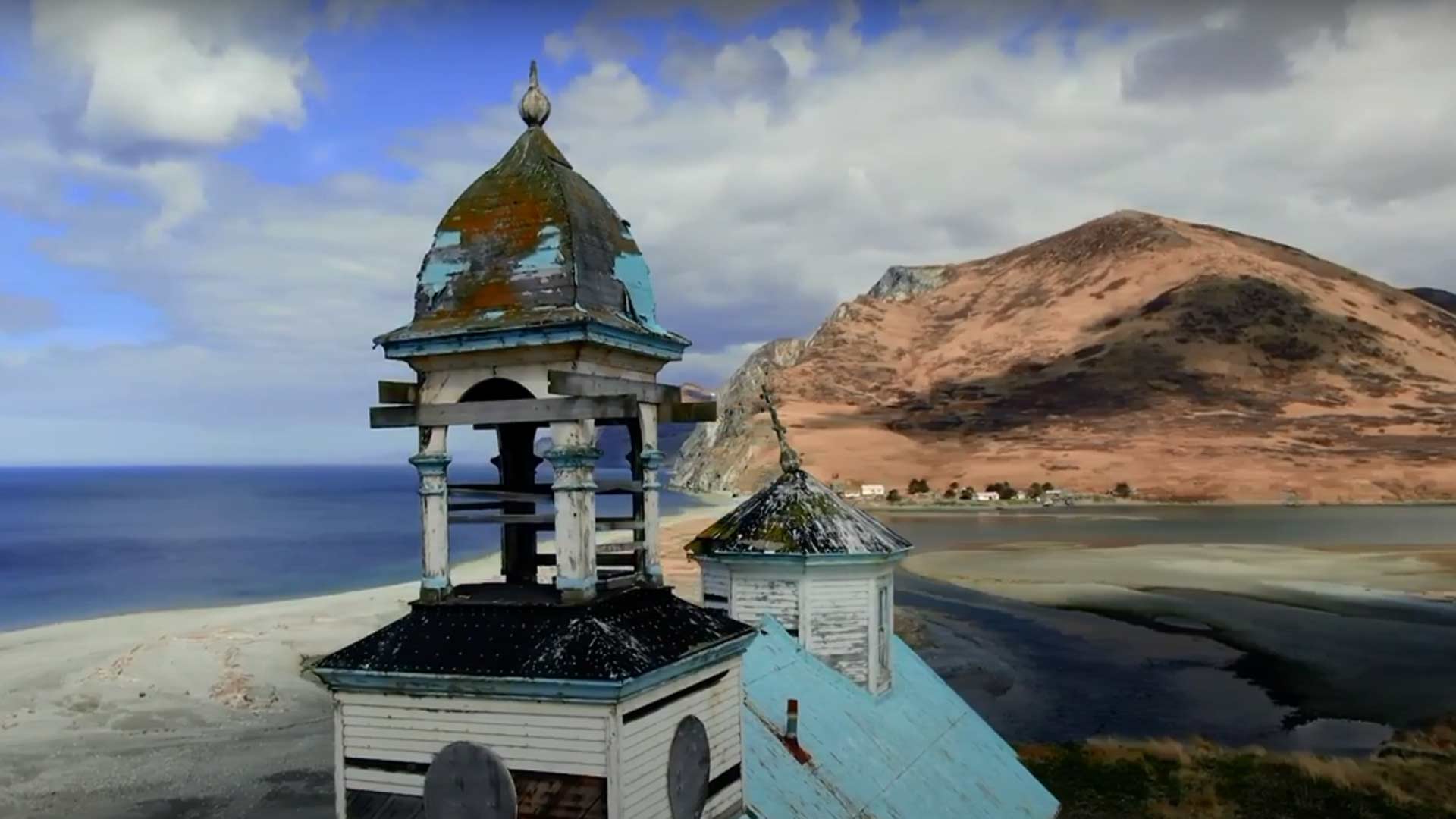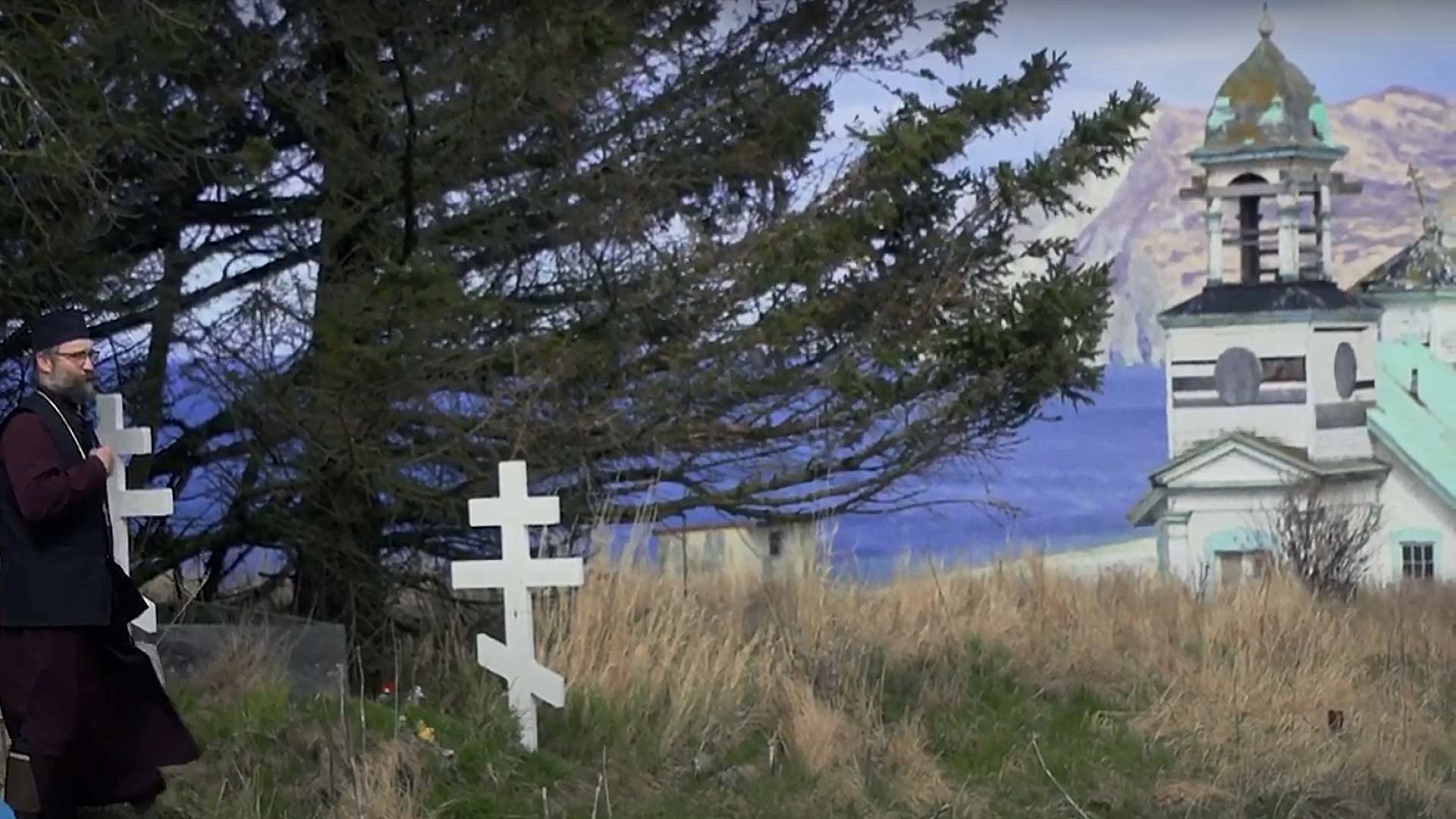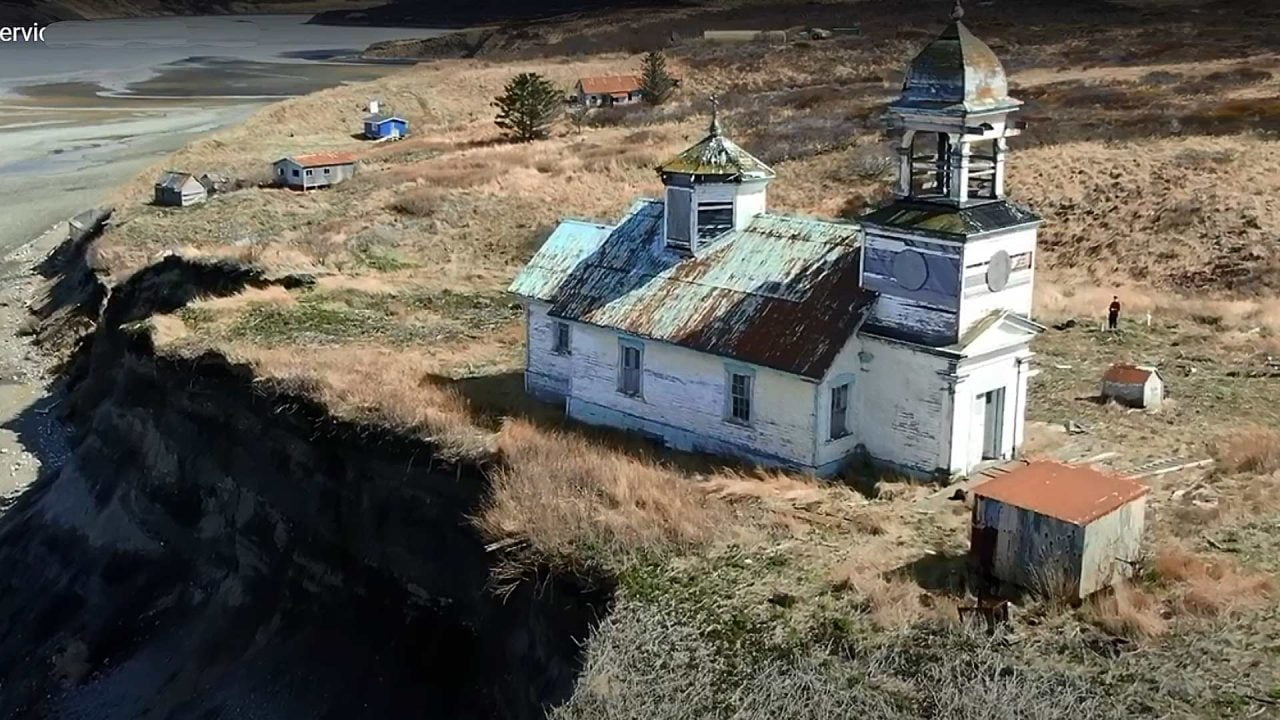
One of the oldest churches in Alaska, and a spiritual treasure to Orthodox Alaska Natives, is on the verge of falling off a massive cliff on Kodiak Island.

The Ascension of Our Lord Chapel located near the remote Village of Karluk on Kodiak Island.
Built in 1888 by the Russian Orthodox, The Ascension of Our Lord Chapel located near the remote Village of Karluk is in danger of being destroyed due to erosion from a river which is undercutting a bluff. The nationally recognized church is now less than 25 feet from the cliff’s edge, and a group of historic preservationists are working with locals and Orthodox Church officials to save it.
“With another big windstorm the church could fall and be lost forever,” said Dorothy Gray, who serves with a group called Russian Orthodox Sacred Sites in Alaska (ROSSIA), an organization that works to preserve historic Orthodox churches across the state. “Our plan is to at least remove the icons and artifacts from the church in the event that we don’t get enough money before the it falls.”
The church stands as a connection to the spiritual and cultural history of the village.
Archbishop David Mahaffey, who oversees about 90 Orthodox parishes across Alaska, said the church is more than just a historic landmark.

An Orthodox clergyman stands outside of The Ascension of Our Lord Chapel near Karluk.
“It is probably the best example we have – and certainly the oldest existent church – of Russian style architecture,” he said. “When we had a conversation about how to save the church, some of the people were weeping. We are doing what we can, but things are ultimately in God’s hands.”
Karluk village is located about 75 miles from the City of Kodiak where Russian Orthodox missionaries first brought Christianity to Alaska in the 1700s. Karluk was once a thriving community with a large cannery. Today the population has shrunk to less than 50. The church, however, stands as a connection to the spiritual and cultural history of the village.
We won’t be able to build a structure like that again.
“If we are able to preserver the church, who knows what the future holds in the next 10 or 20 years,” Archbishop Mahaffey said. “Maybe people will return, and they will need that house of worship again on a regular basis. Right now, we’re just trying to save it so they still have that place of prayer in their community. If we don’t it’s going to fall over the cliff and that will be the end of it. We won’t be able to build a structure like that again.”

Icons and religious items that date back to the 1800s adorn the inside of the Orthodox church near Karluk.
When Russians first came to Alaska in late 1700 it was mainly for fur trade, but the vessels also contained Orthodox missionaries. These men shared the Gospel with area Natives, baptizing and marrying them, as well as helping to build houses of worship.
Archbishop Mahaffey noted that the Orthodox brought the Gospel in a manner that honored local Native traditions and customs. By taking this approach, missionaries let Native Alaskans graft the Christian faith into their ancient way of life.
“They learned the Native language, gave them a written alphabet and translated the Gospel into their language so that they learned the faith in the Native way,” Archbishop Mahaffey said.
When you stand in a church that has stood for a hundred years or more, you can feel the prayer that’s in that building.
Because of this, the Orthodox prayer life has become second nature in many Alaska villages.
“The Russians did not try to make them Russian and so their churches reflect a different kind of Orthodoxy than you would find in Russia,” Archbishop Mahaffey said.
Generations have been baptized, married and buried in and around the church. Saving the building, however, will require roughly $500,000 just to move it from the cliff’s edge. A group that includes ROSSIA, the Alaska Association of Historical Preservation, Bureau of Indian Affairs, the National Parks Service and the Karluk Village are racing against time to raise the money.
“It’s not that easy to raise half a million dollars right now with COVID shutting down a lot of the churches and people being careful about spending money,” Gray said. “We are beating the bushes for donations.”
ALASKA WATCHMAN DIRECT TO YOUR INBOX
Complicating the relocation effort is the fact that the man who built the church is buried under the structure.
“That is another challenge – to remove his body first, and relocate his grave,” Gray said.
Despite the obstacles, Archbishop Mahaffey holds out hope that the historic chapel can be saved, in part because he sees it as much more than a simple building.
“When you stand in a church that has stood for a hundred years or more, you can feel the prayer that’s in that building,” he said. “Those places are so rich that it is hard to explain to those who have a secular mindset. But to me it is more valuable than all the gold and silver or whatever else there may be.”
“If you let the church decay, you are not just decaying a building,” he added. “You are decaying a way of life.”
TAKE ACTION







